1
Transactions
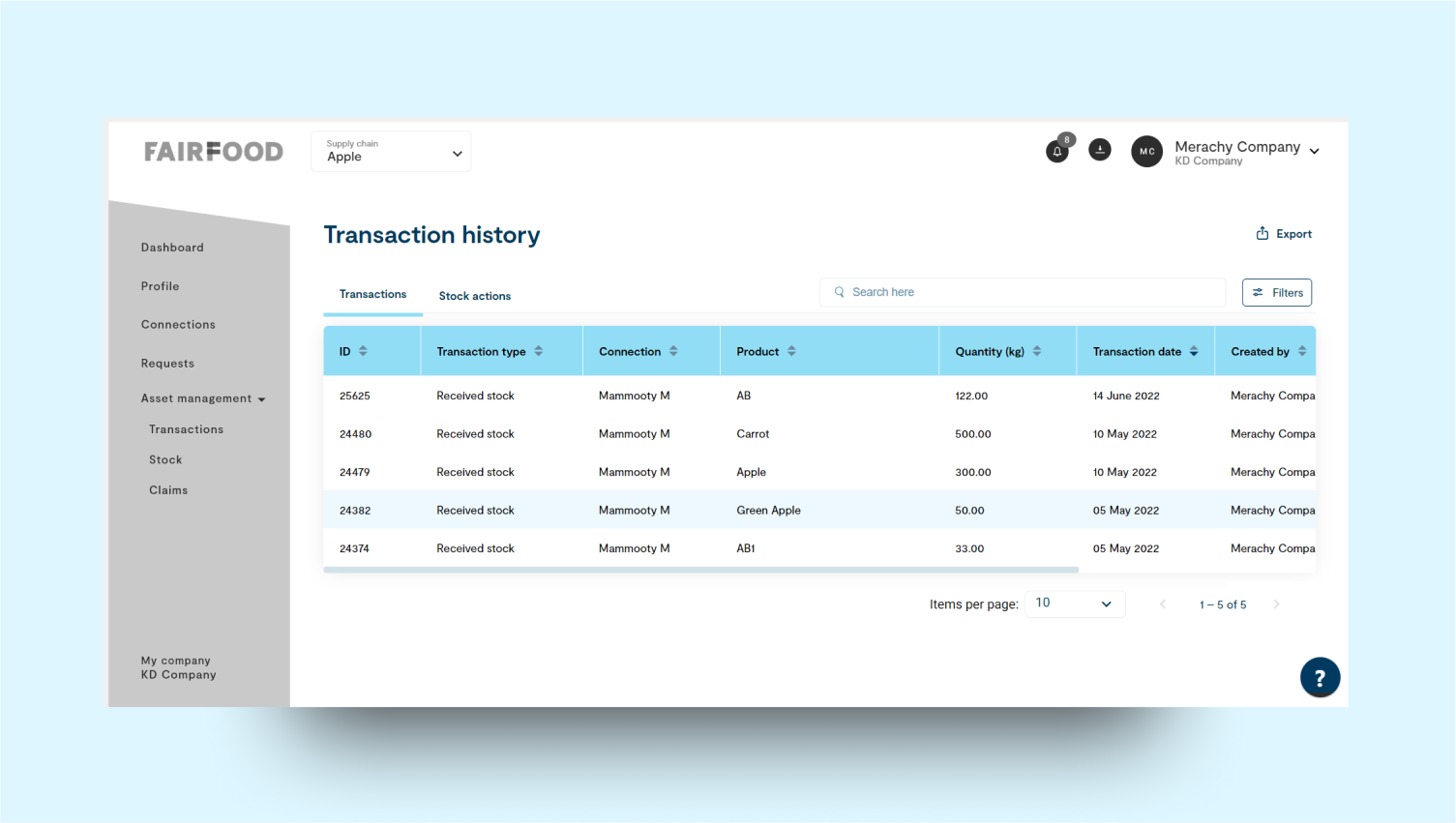
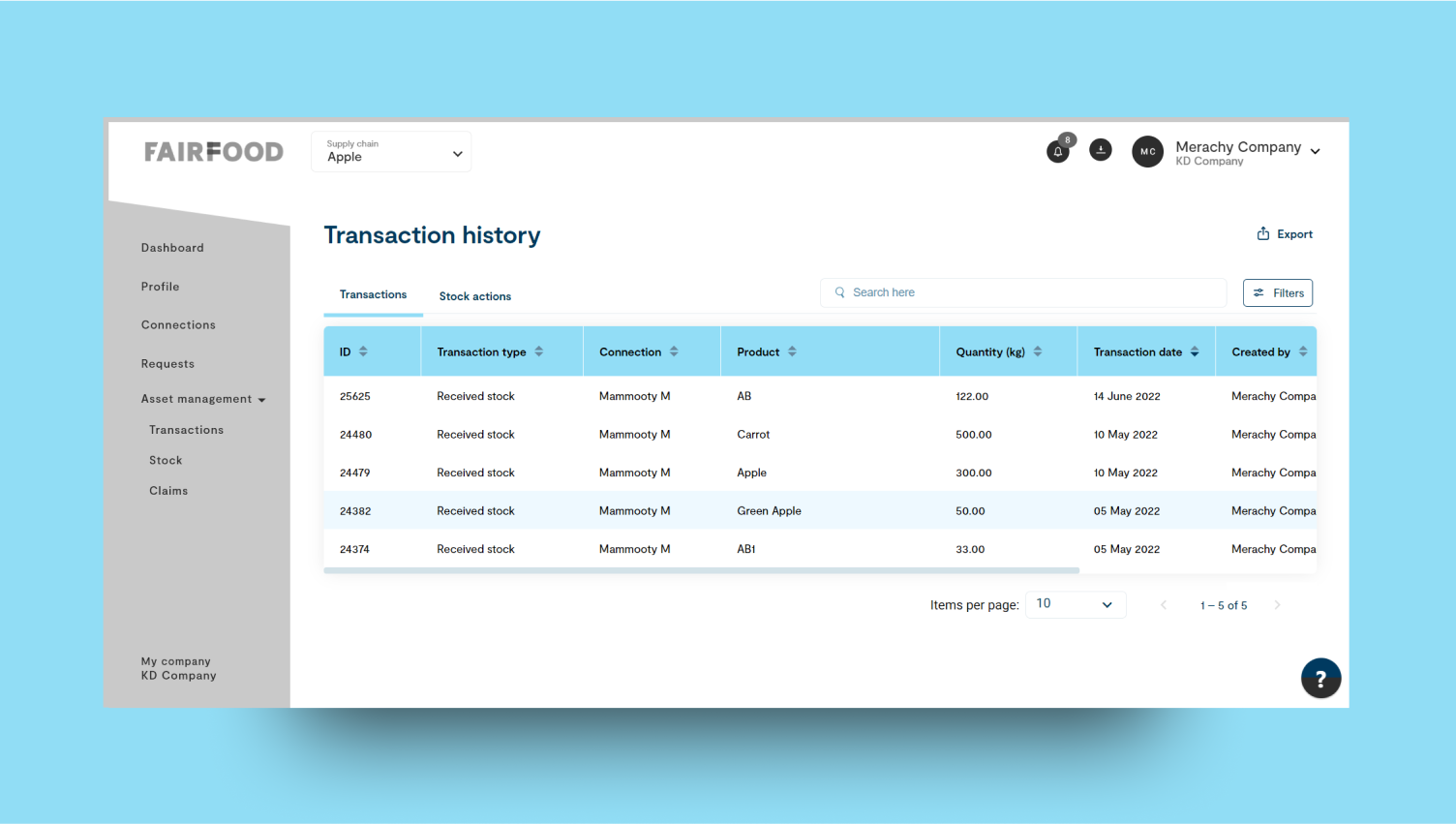
- The “Transactions” menu has two tabs: “Transactions” and “Stock Actions.”
- The “Transactions” tab shows a list with ID, Transaction type, Connection, Product, Quantity (kg), Transaction date, Created by, and Blockchain log.
- Click on any transaction to view detailed information.
- All listings in the “Transactions” tab are external transactions.
2
Transactions details
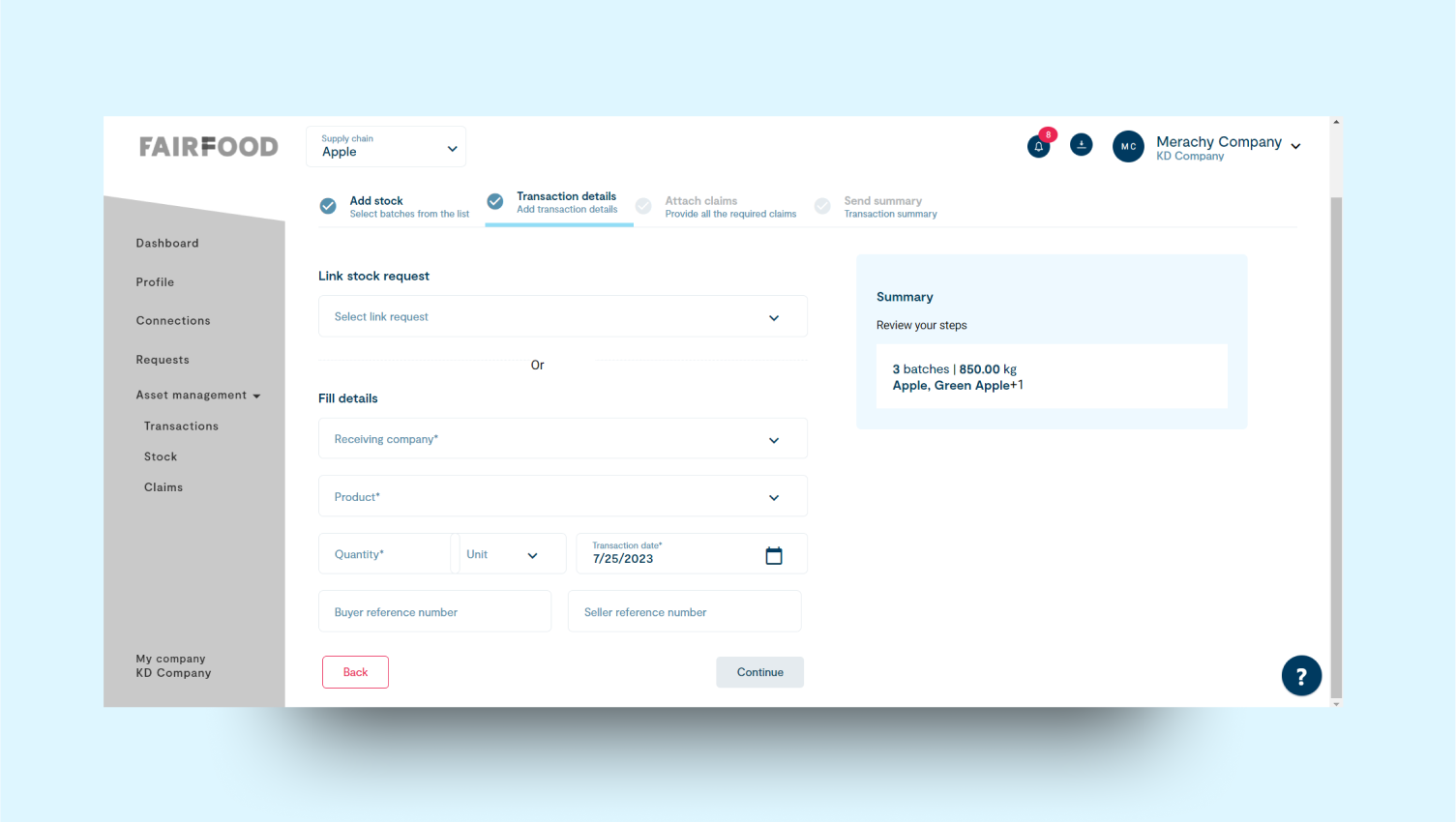
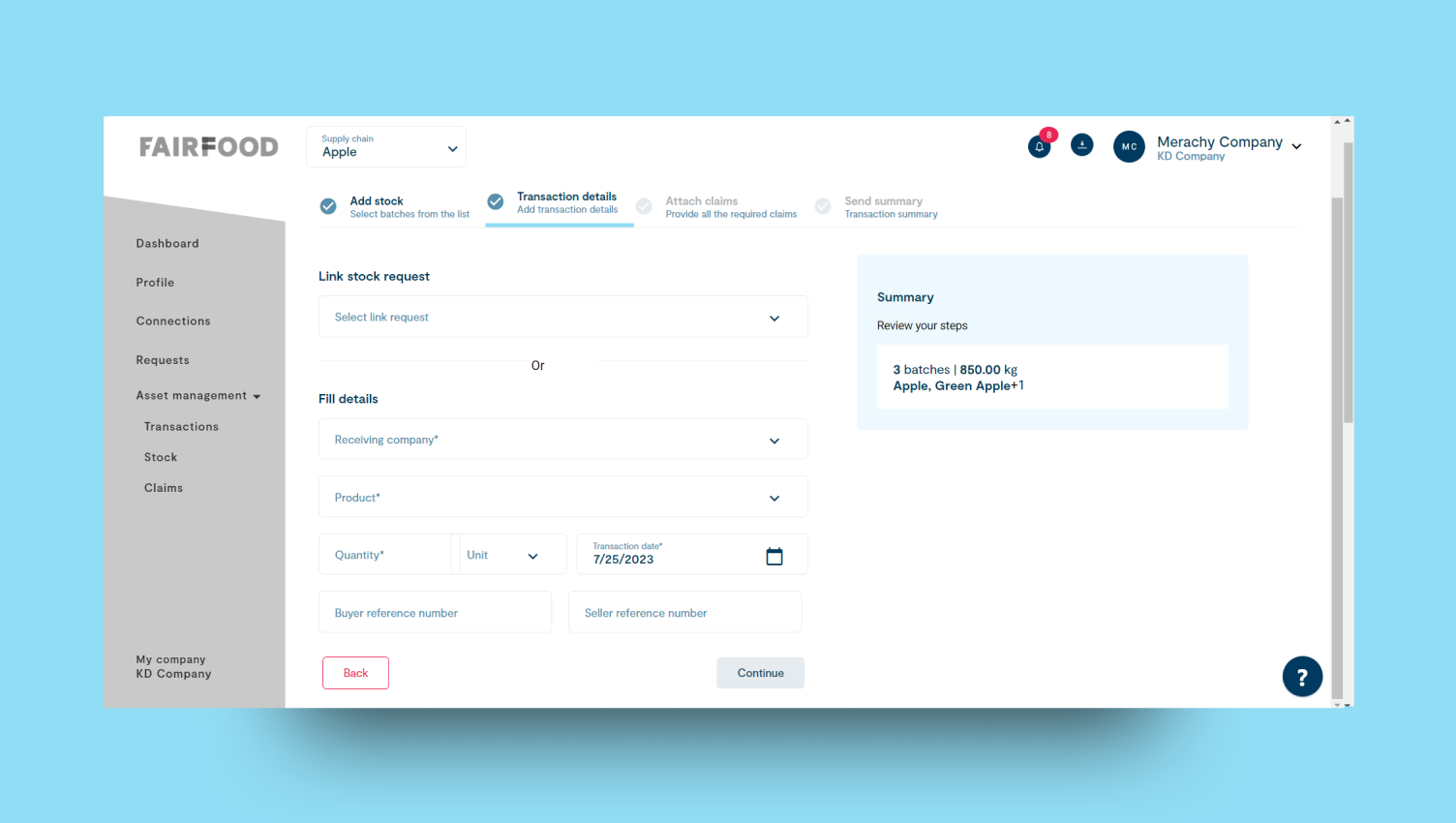 The transaction details are organized into four tabs: Basic, Trace, Claims, and Docs. These tabs provide comprehensive information about the transaction, including essential details, traceability data, associated claims, and relevant documentation for reference and verification purposes.
The transaction details are organized into four tabs: Basic, Trace, Claims, and Docs. These tabs provide comprehensive information about the transaction, including essential details, traceability data, associated claims, and relevant documentation for reference and verification purposes.- Basic: Shows description, street name, country, province, city/village, postal code, latitude, longitude, name, email, and contact number.
- Trace: Tracks the supply chain flow, showing details of each actor and their transactions. It helps monitor the movement of goods and provides crucial information at each stage.
- Claims: Manages and documents claims related to transactions or products. It allows users to track and address issues or disputes in the supply chain.
- Docs: Stores important documents like invoices, contracts, and certifications, providing easy access and management within the supply chain process.
3
Transactions - Stock actions
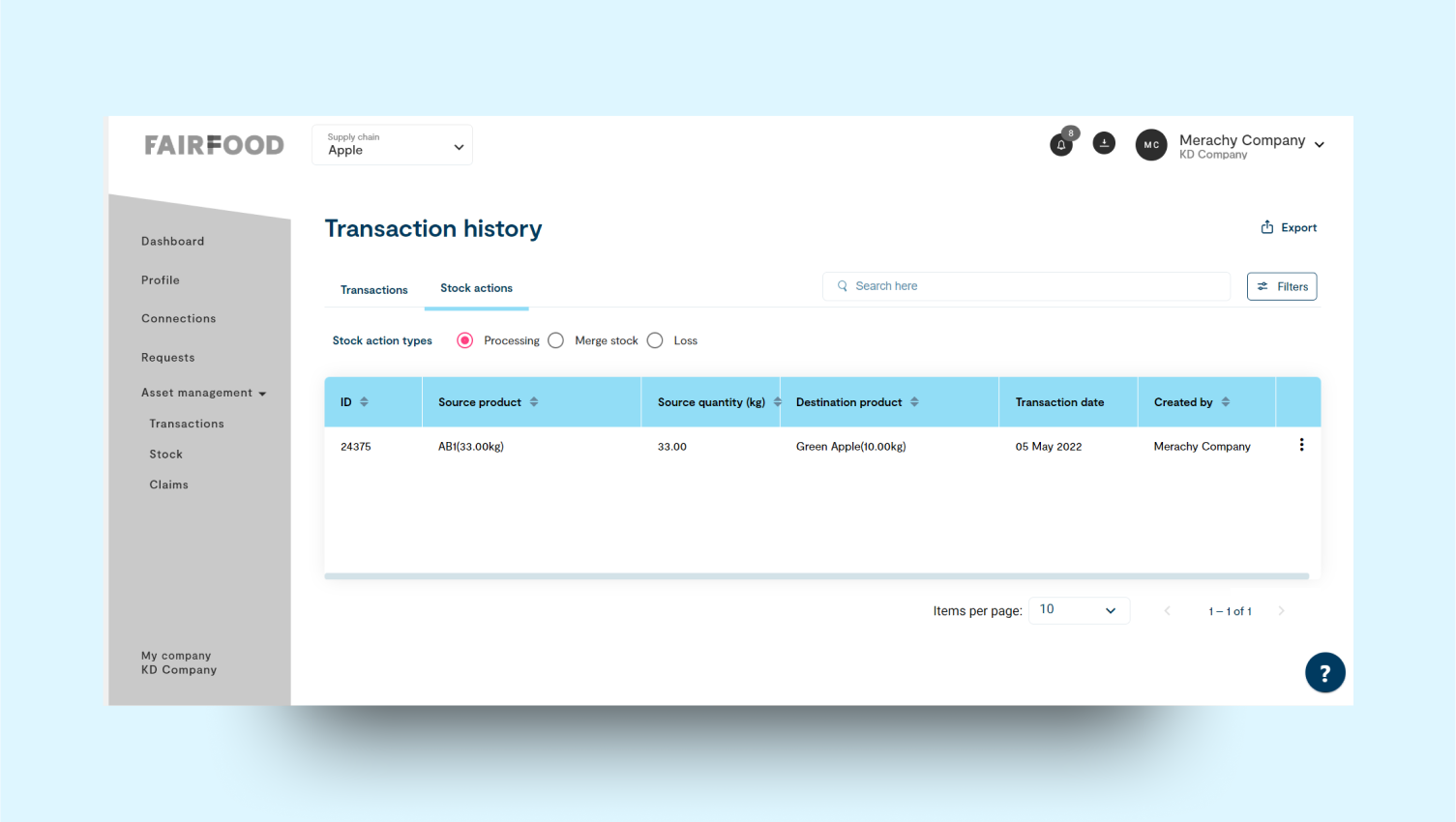
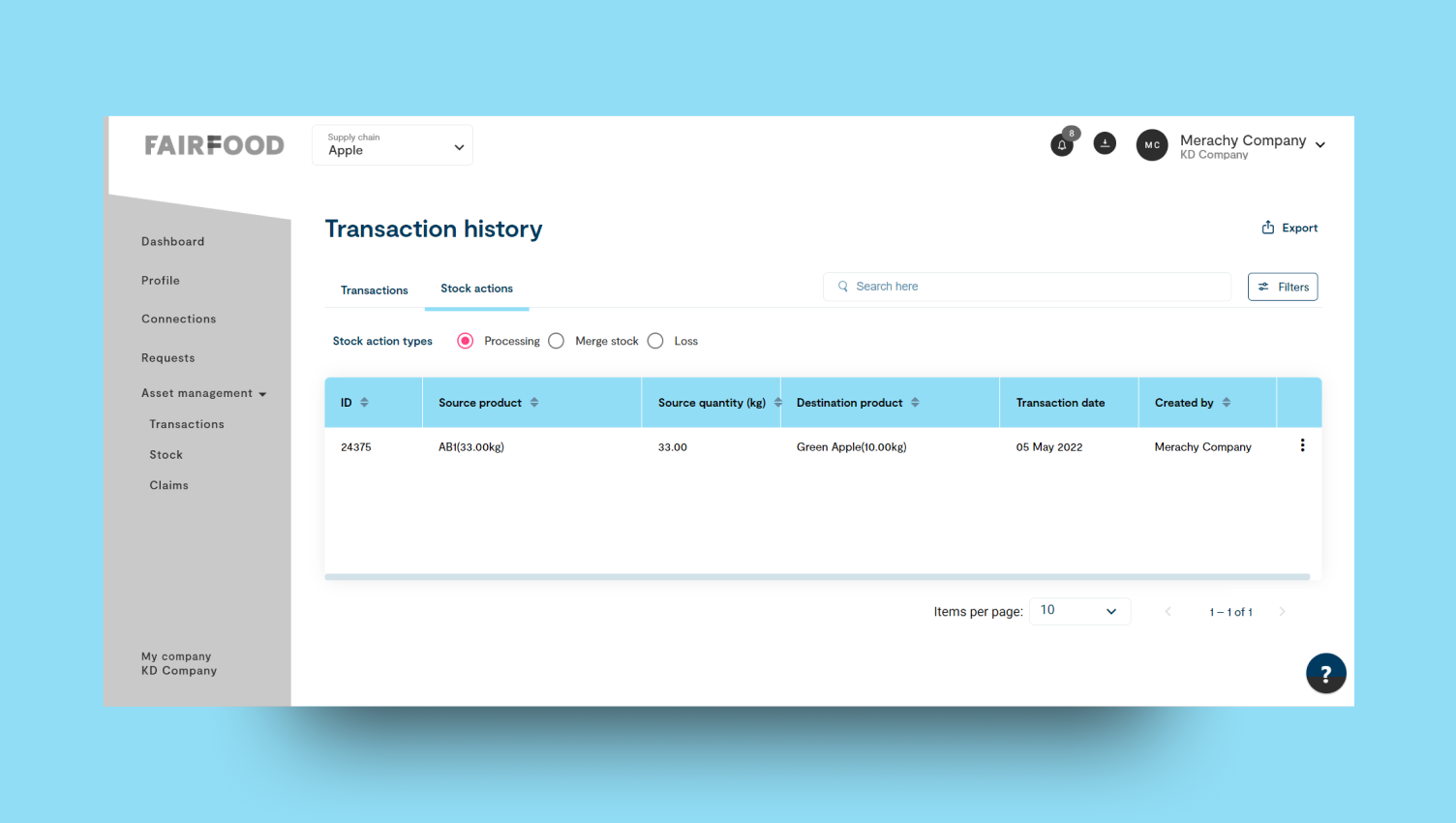 The Stock Action details section encompasses various stock-related actions, including Processing, Merge Stock, and Loss. It provides information and documentation regarding these actions, allowing users to track and manage stock movements, inventory adjustments, and any losses incurred within the supply chain.
The Stock Action details section encompasses various stock-related actions, including Processing, Merge Stock, and Loss. It provides information and documentation regarding these actions, allowing users to track and manage stock movements, inventory adjustments, and any losses incurred within the supply chain.- Basic: Shows description, street name, country, province, city/village, postal code, latitude, longitude, name, email, and contact number.
- Trace: Tracks the supply chain flow, showing details of each actor and their transactions. It helps monitor the movement of goods and provides crucial information at each stage.
- Claims: Manages and documents claims related to transactions or products. It allows users to track and address issues or disputes in the supply chain.
- Docs: Stores important documents like invoices, contracts, and certifications, providing easy access and management within the supply chain process.
